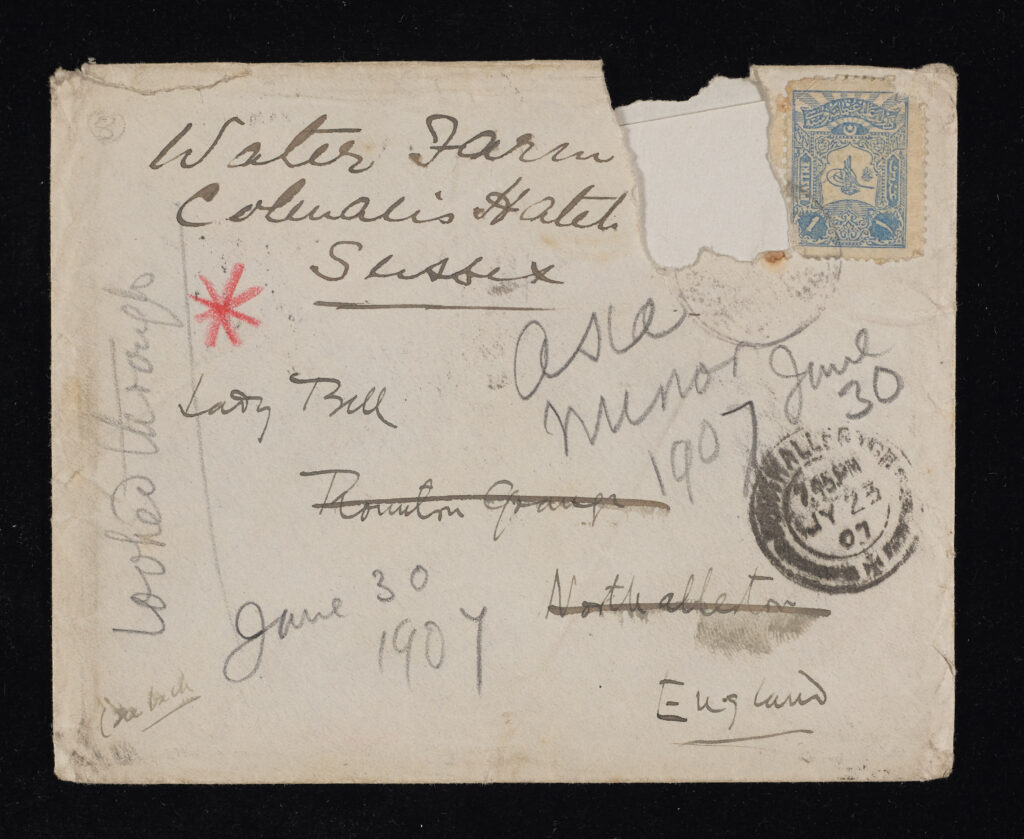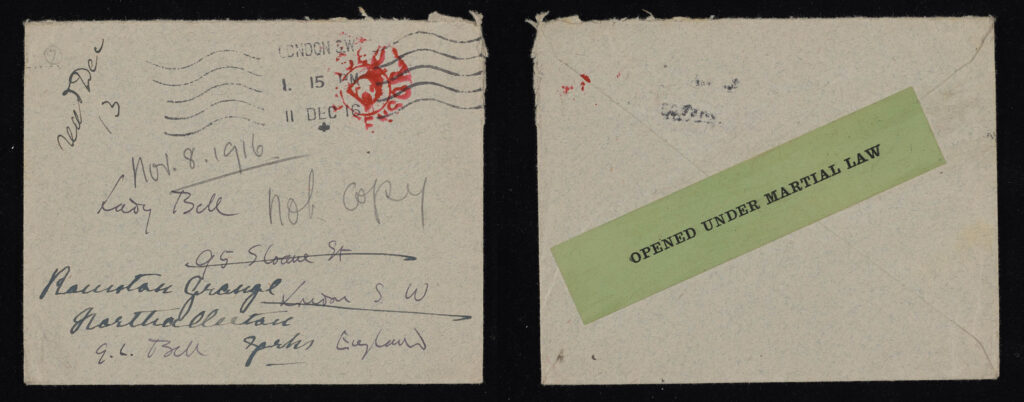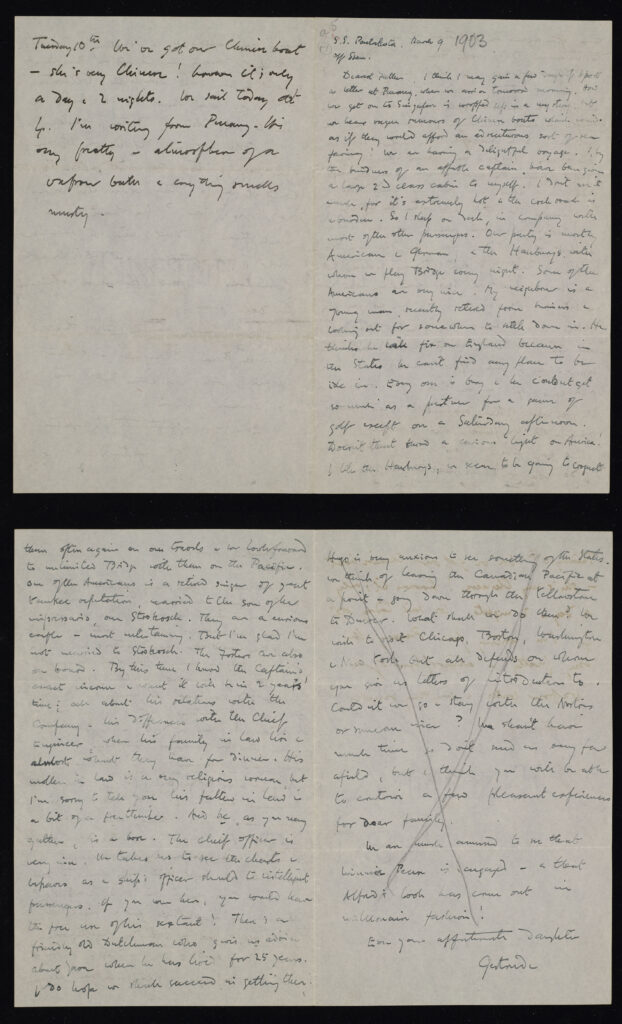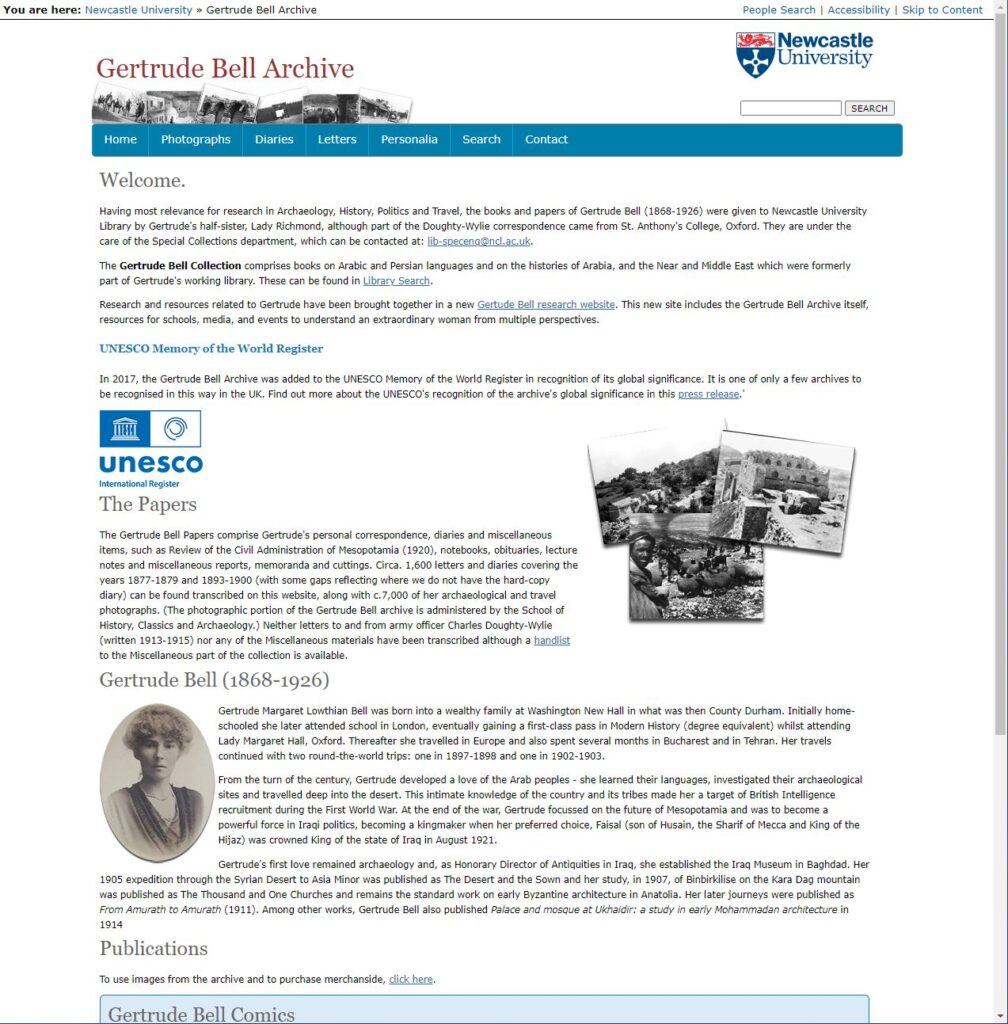Our Gertrude Bell website (link:http://gertrudebell.ncl.ac.uk/) features transcripts of thousands of Bell’s letters and diary entries, alongside over 7,500 of her photographs. Thanks to a generous donation from the Harry and Alice Stillman Family Foundation we have been able to digitise and catalogue the letters Bell wrote to her family, her diaries and photographs to modern day archival standards and this process has allowed us to uncover details beyond what has previously been recorded in the transcriptions.
Original transcripts of Bell’s letters and diaries were created in the 1990s and published online in the early 2000s. While these provide an excellent resource for exploring their content, cataloguing and digitisation has revealed new details and insight into how Bell communicated with her family, how those letters reached home, and the early 20th Century world she lived in.
When travelling in the Middle East, as she did on several prolonged trips in the 1900s and 1910s, Bell often used her letters to chronicle her journey. She regularly continued writing the same letter for several days, adding a new section each day and posting it when passing through a town. The original transcripts of Bell’s letters treat each day’s addition as a separate page on the website, however cataloguing and digitisation has revealed how often Bell wrote the same letter over multiple days, and sometimes, how rarely she passed civilization and an opportunity to post a letter.

The envelopes Bell’s letters were posted in also provide clues about their journey after they were posted home. Her father, a wealthy industrialist, and her step-mother lived between their family home at Rounton Grange in North Yorkshire and Sloane Street in London. Bell would choose one or the other address to post the letter to and if the letters arrived at the address the intended parent was not at they would be forwarded on by crossing out the address and adding the correct one. This was not unlikely when postage from the Arabian Desert to Rounton could take several months! Indeed, the envelopes or letters themselves often contain hand written dates telling us when a letter was received by her family, providing an insight into the speed and efficiency of inter-continental postage of the day.
As records of their journey back to Britain the envelopes also have stamps affixed, postmarks, and during the First World War had stickers applied to signify that they’d been passed by a censor. The stamps provide a small insight into the countries Bell was posting her letters from and their changing political landscapes. This is particularly the case for the time that Gertrude lived and worked in what is now Iraq, during and after the First World War, where the changing face of the British occupation is reflected in the stamps on the envelopes of Gertrude’s letters home.

The letters also reveal clues as to how they’ve been used and managed in the time since Gertrude’s death in 1926. Following her death, Gertrude’s step-mother compiled and published two books containing text from many of Gertrude’s letters. The process of deciding what was and what wasn’t included is seen by the crossing out in pencil of sections of letter, or marking on the envelope that a letter was not to be copied. These are often sections where Gertrude talks about family matters or where Gertrude offered her (typically forthright) opinions of the people she met and worked with. Sometimes brief instructions were scribbled on the letters or envelopes themselves, particularly if a letter was not to be copied.

Thus, the process of cataloguing and digitising Gertrude Bell’s rich archive of letters allows us to explore facets of Bell’s life and her letters that are not immediately obvious from their content alone. Marks which help us understand how she lived and communicated with her family, how the political and cultural landscape of the lands that Bell lived in changed, and how Bell’s family managed her letters can all be explored through the newly digitised and catalogued archive.
Thanks to project funding from the Harry and Alice Stillman Family Foundation a brand new Gertrude Bell website in early 2023. This will make the digitised images, transcripts and a new archival catalogue available alongside each other, providing a step-change in access to this internationally important archive.
The Gertrude Bell website can be found at http://gertrudebell.ncl.ac.uk/
Find out more about the Gertrude Bell and the Kingdom of Iraq at 100 project, and the archive on the Newcastle University website here: https://www.ncl.ac.uk/press/articles/latest/2021/08/gertrudebellarchivedonation/

